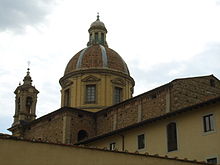
Pietro Perugino, born Pietro Vannucci, was an Italian Renaissance painter of the Umbrian school, who developed some of the qualities that found classic expression in the High Renaissance. Raphael was his most famous pupil.

Benozzo Gozzoli was an Italian Renaissance painter from Florence. A pupil of Fra Angelico, Gozzoli is best known for a series of murals in the Magi Chapel of the Palazzo Medici-Riccardi, depicting festive, vibrant processions with fine attention to detail and a pronounced International Gothic influence. The chapel's fresco cycle reveals a new Renaissance interest in nature with its realistic depiction of landscapes and vivid human portraits. Gozzoli is considered one of the most prolific fresco painters of his generation. While he was mainly active in Tuscany, he also worked in Umbria and Rome.
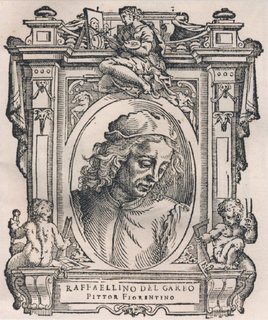
Raffaellino del Garbo was a Florentine painter of the early Renaissance.
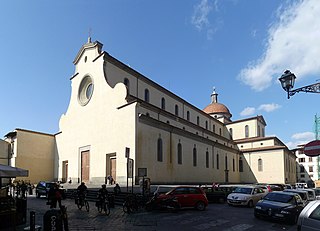
The Basilica di Santo Spirito is a church in Florence, Italy. Usually referred to simply as Santo Spirito, it is located in the Oltrarno quarter, facing the square with the same name. The interior of the building – internal length 97 meters – is one of the preeminent examples of Renaissance architecture.
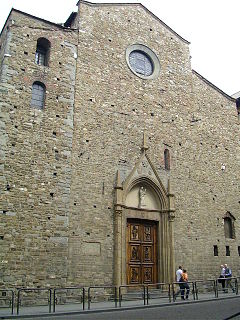
Santa Maria Maggiore di Firenze is a Romanesque and Gothic-style, Roman Catholic church in Florence, region of Tuscany, Italy. This is among the oldest extant churches in Florence.

The Church and Convent of the Girolamini or Gerolamini is a church and ecclesiastical complex in Naples, Italy. It is located directly across from the Cathedral of Naples on via Duomo. The facade is across the homonymous piazza and street from Santa Maria della Colonna. It is one block west of Via Duomo.

Sant'Anna dei Lombardi,, and also known as Santa Maria di Monte Oliveto, is an ancient church and convent located in piazza Monteoliveto in central Naples, Italy. Across Monteoliveto street from the Fountain in the square is the Renaissance palace of Orsini di Gravina.

San Marco is a religious complex in Florence, Italy. It comprises a church and a convent. The convent, which is now the Museo Nazionale di San Marco, has three claims to fame. During the 15th century it was home to two famous Dominicans, the painter Fra Angelico and the preacher Girolamo Savonarola. Also housed at the convent is a famous collection of manuscripts in a library built by Michelozzo.

Santa Maria del Carmine is a church of the Carmelite Order, in the Oltrarno district of Florence, in Tuscany, Italy. It is famous as the location of the Brancacci Chapel housing outstanding Renaissance frescoes by Masaccio and Masolino da Panicale, later finished by Filippino Lippi.

Santa Maria Maddalena dei Pazzi is a Renaissance-style Roman Catholic church and a former convent located in Borgo Pinti in central Florence.
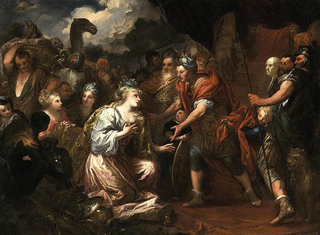
Pietro Dandini was an Italian painter of the Baroque period, active mainly in Florence.

San Martino church, also called San Martino Maggiore is a Gothic-style, Roman Catholic church located at the corner of Via Marsala and Via Guglielmo Oberdan in Bologna, region of Emilia Romagna, Italy. The church was founded by the adjacent Carmelite monastery. In August 1941 Pope Pius XII elevated it to the status of a minor basilica.
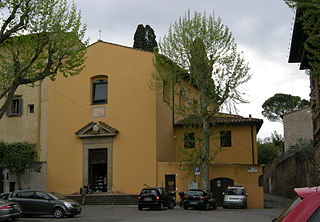
San Francesco di Paola is a small Renaissance-style Roman Catholic church in the Oltrarno quarter of Florence, central Italy.
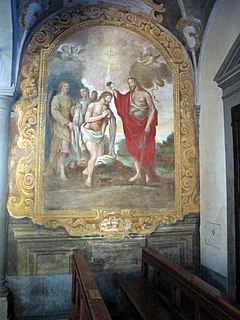
Anton Domenico Bamberini (1666–1741) was an Italian painter, mainly of religious Baroque frescoes in churches completed in a heavily ornamented and stuccoed trompe-l'œil frames and settings.
San Biagio is a Baroque architecture, Roman Catholic church, located on Via del Carmine #4 in central Modena, Italy.

The Complesso di San Firenze is a 17th-century Baroque-style building, consisting of a church, palace, and former oratory, located on the southeast corner of the saucer-shaped piazza of San Firenze, located in the quartiere of Santa Croce in central Florence, region of Tuscany, Italy. The buildings were commissioned by the Oratorians of Saint Philip Neri.

Santa Maria Assunta is a Roman Catholic parish church located in Settignano, a frazione of Florence in the region of Tuscany, Italy.
Antonio Montauti was an 18th-century Italian sculptor active in Florence and Rome.

The Pazzi Crucifixion is a circa 1495 fresco of the Crucifixion of Christ by Perugino in the chapter house of the Cistercian monastery of Santa Maria Maddalena dei Pazzi in Florence. It is his most notable work in Florence, forming part of the sacred conversation style. It was a commission from the Pucci family - Antonio Billi's account book reports Dionigi and Giovanna Pucci commissioning a work from "Master Piero della Pieve a Chastello, a Perugian" on 20 November 1493 and paying 55 gold ducats on its completion on 20 April 1496.

Santa Maria della Neve al Portico is a Roman Catholic church and convent located on a rural site on Via del Podestà #86 in the suburban neighborhood of Galluzzo southeast of the urban center of Florence, Italy. It remains a monastery and is also known as the Convento Il Portico and now houses the Istituti Religiosi Femminili Suore Stimmatine.
